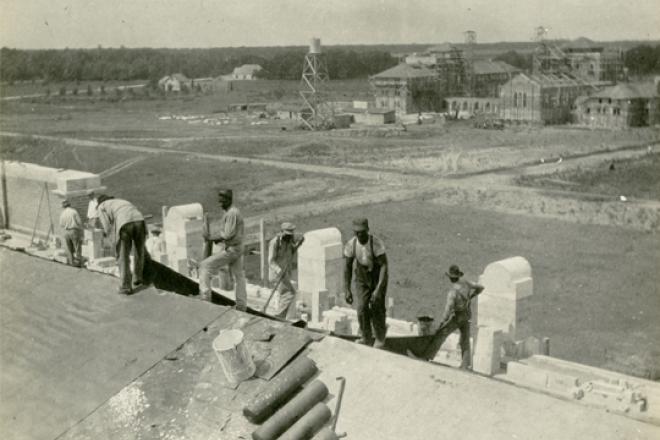Rice University Professor of English Terrence Doody contributes this wonderful essay about walking. Doody has signed the "May 1,000 Night Walks Bloom" petition calling for a street to be opened to pedestrians once a week and you can add your signature here.
My daughter Clare moved to Washington, D. C., in September to take a job with a political writing group. She was born in Houston and went to private schools from pre-K through twelfth-grade. Which meant she had to be driven everywhere—not only to and from school everyday, and then back again some nights, but also to the houses of all her friends, who lived as far away from school, in every direction, as she did. From the house in Bellaire, she could walk to a sidewalk but saw no need to. Then she went away to school, but to University of Southern California in Los Angeles.
I grew up in Oak Park, Illinois, in a neighborhood in which everyone walked to school, to the parish and public grammar schools and to the public and Catholic high schools. When I was nine, I could be sent in one direction to get more milk for dinner and in another to buy my father cigarettes. When I was fourteen or fifteen, in a safer world then, I walked to my friends’ houses and sometimes a couple of miles back home at 1:30 or 2 AM. I can’t remember getting a ride, except to dances.
I liked walking. In seventh and eighth grade, I would take different routes to school and try to think my way into the houses of the people I didn’t know to discover who lived there: did any of the kids have their own rooms? what time did they have to go to bed at night? Walking even then was an imaginative experience, and not bad training for an English major.
In eighth grade I delivered the parish bulletin to the printer’s, whose shop was in downtown Chicago. I’d walk to the El in Oak Park, catch the train, then walk through the part of the Loop where not everyone was white. At 13, this was a thrilling job. The summer I was 16, I worked as a messenger for a photo-engraving firm. I delivered prints to many other printing shops on the edges of the Loop, and to huge plants like the R. R. Donnelly building on 22nd Street. But I also made deliveries to advertising agencies along Michigan Avenue, in another world. I loved walking, and learned to love the city, and was preparing myself for Paris, Amsterdam, London, and Prague.
When I visited Clare, however, I wasn’t quite prepared for Washington because I had been there, but had never seen it on foot. And I had no idea it had realized Clare’s inner pedestrian. She had sent her car home and now lived and worked, and ate and drank, and shopped and played, most of the time in the general neighborhood of Dupont Circle. I’d offer to catch a cab at my hotel, then swing by and pick her up, but she preferred to walk. So we hit the Newseum at about 11, Georgetown about 2, then walked from there back toward her apartment, where we took a small detour to the local bookstore, which was as wonderful as the Newseum.
I have lived in Houston too long. Walk to a bookstore? You’re kidding!
No problem, though, walking with Clare to the White House.
I knew enough to recognize Washington as a Baroque city, with long diagonal boulevards and traffic circles imposed on a grid, which made the necessary room for the city’s monuments to itself. On foot, however, when you can see several of these boulevards meet at a circle, the space this arrangement opens is emotional as well. The complex traffic of people and cars moving down great open vistas toward a visible horizon: the city’s visual field is matchless. And the hills, the rolling city parks, and the water aren’t yet even in view.
Clare’s state of excitement with her own life has to do with a terrific job, and for once enough money, in a place electric with its own importance. Everyone is a possible connection in any number of networks at once, and there is all this bright potential even along the sidewalks. It is also necessary to walk in order to have the time to take it all in, to see and think about everything, and learn then to imagine its whole. Joyce did this in Dublin, he implied later, in order to memorize the city; Dickens did it in London when it was the greatest city in Europe, in order to create it for himself.
We all do this, whether we can write or not. In “The Practice of Everyday Life,” the French theorist Michel de Certeau says that "the ordinary practitioners of the city...are walkers, ‘Wandersmanner,’ whose bodies follow an urban ‘text’ they write without being able to read it." Like any character in the plot of any novel.
However, in real life, we can look back over the routes we have taken and the distances we have come, and we can use our walks to meditate.










